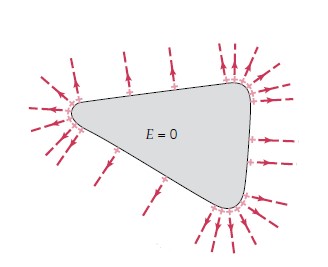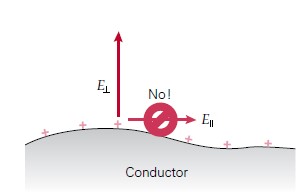Electrostatic Properties of a Conductor
In this post, we will discuss the Electrostatic Properties of a Conductor (Conductors and Electric Fields).
Electrostatic Properties of a Conductor | Conductors and Electric Fields
The electric fields associated with charged conductors have important properties. These are listed and explained below.
1) The electric field is zero inside a charged conductor
By definition in electrostatics, the charges are at rest. Conductors possess some electrons that are free to move but these electrons don’t move under “electrostatic” conditions.
As a result, the electrons must experience no electric force and thus no electric field.
Hence we conclude that:
The electric field is zero inside a charged conductor.
2) In static conditions, the interior of the conductor contains no excess charge
As the electric field is zero inside a charged conductor, from Gauss’ theorem it can be said that the interior of the conductor contains no excess charge.
3) Any excess charge on an isolated conductor resides entirely on the surface of the conductor
Excess charges on a conductor tend to get as far away from each other as possible because they are highly mobile. Then: Any excess charge on an isolated conductor resides entirely on the surface of the conductor.
4) The electric field at the surface of a charged conductor is perpendicular to the surface.
Another property of static electric fields and conductors is that there cannot be a tangential component of the field at the surface of the conductor. If this were not true, charges would move along the surface, contrary to our assumption of a static situation. Thus: The electric field at the surface of a charged conductor is perpendicular to the surface.
5) Excess charge tends to accumulate at sharp points, or locations of highest curvature, on charged conductors
The excess charge on a conductor of irregular shape is most closely packed where the surface is highly curved (at the sharpest points). Since the charge is densest there, the electric field will also be the largest at these locations. That is: Excess charge tends to accumulate at sharp points, or locations of highest curvature, on charged conductors. As a result, the electric field is greatest at such locations.
These properties are summarized in Figures 1 and 2 below.


Extra but very Relevant Points
Note that the above points are true only for conductors under electrostatic conditions.
Electric fields can, in fact, exist inside non-conducting materials and inside conductors when conditions vary with time.

